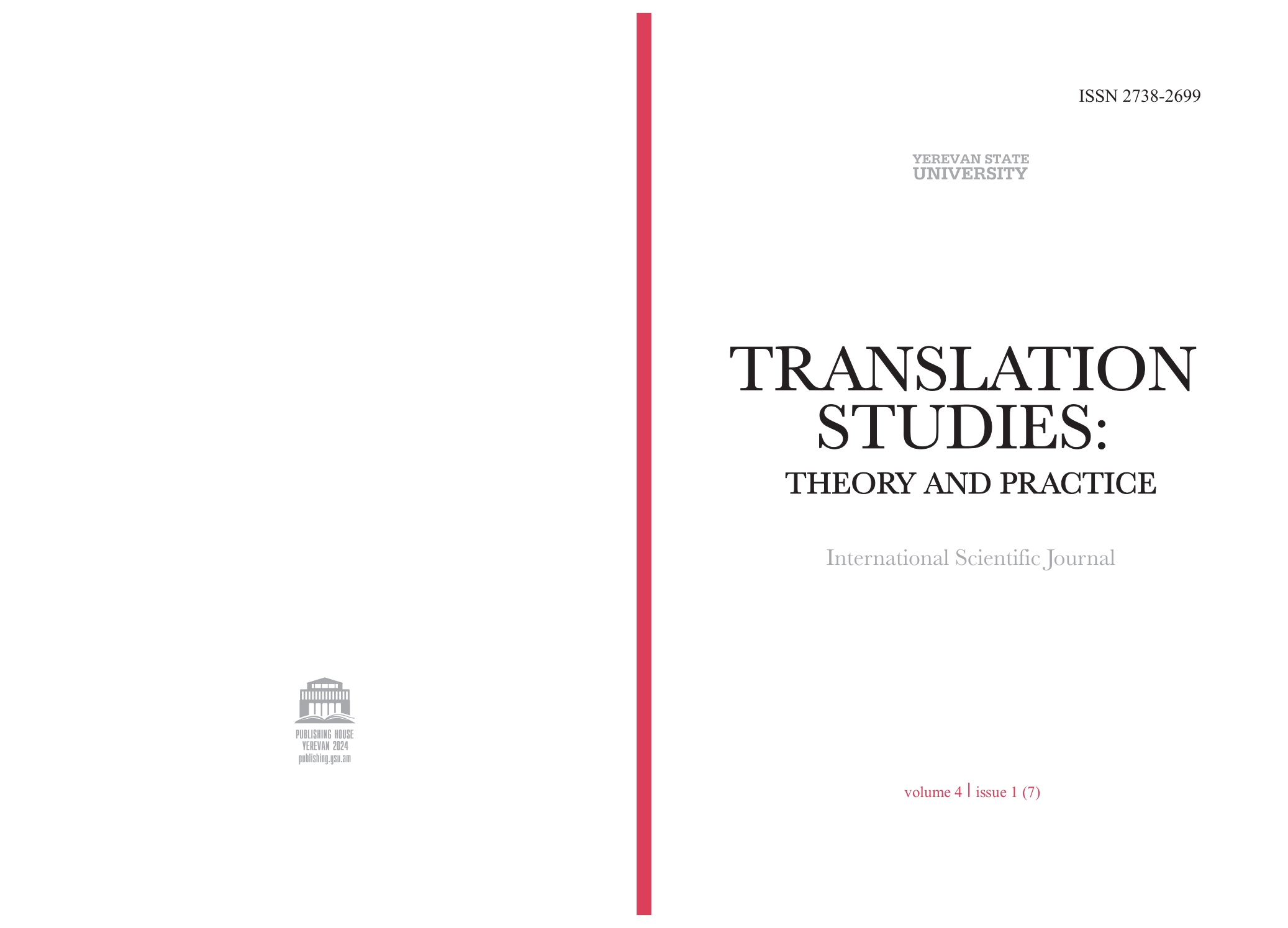Problems of Mediated Translation in Daniel Defoe’s Robinson Crusoe
DOI:
https://doi.org/10.46991/TSTP/2024.4.1.117Keywords:
mediated translation, literary translation, idioms, stylistic devicesAbstract
Mediated translation as a linguistic and literary phenomenon is of great interest in terms of studying the linguistic, structural, and linguo-cultural aspects of languages involved in the translation process. Despite the ambiguous attitudes of translation studies theorists and practitioners, translation through an intermediate language remains significant for the representation of distinct literatures from the perspective of different cultures. In fact, mediated translation seeks to understand the dynamics between the source and target languages, cultures, and communicative contexts, and how they can influence the translation process. Overall, the main goal is to gain insights into the translation process and its implications for communication and understanding between different languages and cultures. In recent years mediated translation has become a more popular concept in translation studies research field. This growing popularity is evident from the noticeable increase in the number of academic events and scientific publications on the topic. The current study aims at conducting a comparative analysis of the mediated translations of the novel Robinson Crusoe by Daniel Defoe in English, Russian, and Armenian. An attempt has been made to illustrate the influence of intermediary language on the adequacy and equivalence of the translation of the abovementioned work highlighting the inconsistencies in the translation process. Basing on the research several conclusions have been drawn.
References
Defoe, Daniel. 1719. Robinson Crusoe. London. Penguin Books Ltd.
Defoe, Daniel. 1904. Robinzon Kruzo [Robinson Crusoe]. Translated by M. Yesipova. Moskva: Izdatel’ K.I. Tikhomirov. Accessed August 10, 2023. https://fantlab.ru/edition239837
Defoe, Daniel. 1948. Robinzon Kruzo [Robinson Crusoe]. Translated by H. Harutyunyan. Yerevan. Arevik Publishing House.
Dollerup, Cay. 2009. Eugene A. Nida and Translation Studies. Brussels: Les Éd ition du Hazsard.
Walter, E. (Ed.). 1998. Cambridge International Dictionary of Idioms. United Kingdom. Cambridge University Press.
Clark, Dessie. 2012. Gender, Violence and the Past in Edda and Sagga. Oxford. Oxford University Press.
Gambier, Yves. 1994. “La retraduction, retour et détour [Retranslation, Revival and Detour].” Meta: Journal des traducteurs, 39(3). Accessed March 09, 2017. https://doi.org/10.1080/14781700.2017.1285247
Kittel, Harald, and Armin Paul Frank. 1991. “Introduction.” In Interculturality and the Historical Study of Literary Translations, edited by Harald Kittel, and Armin Paul Frank. Berlin: Erich Schmidt Verlag.
Landers, Clifford. 2001. Literary Translation: A Practical Guide. Clevedon: Multilingual Matters.
Pięta, Hanna, and Rita Bueno Maia. 2015. “Integrating Indirect Translation into the Academic Education of Future Generations of Translators across Europe: A Lisbon Model.” University of Lisbon. Accessed January, 2015. https://www.researchgate.net/publication/295079386
Shuttleworth, Mark, and Moira Cowie. 1997. Dictionary of Translation Studies. Manchester: St. Jerome.
Toury, Gideon. 2012. Descriptive Translation Studies and Beyond. Rev. Ed. Amsterdam: John Benjamins.
Downloads
Published
How to Cite
Issue
Section
License
Copyright (c) 2024 Nona Harutyunyan

This work is licensed under a Creative Commons Attribution-NonCommercial 4.0 International License.










